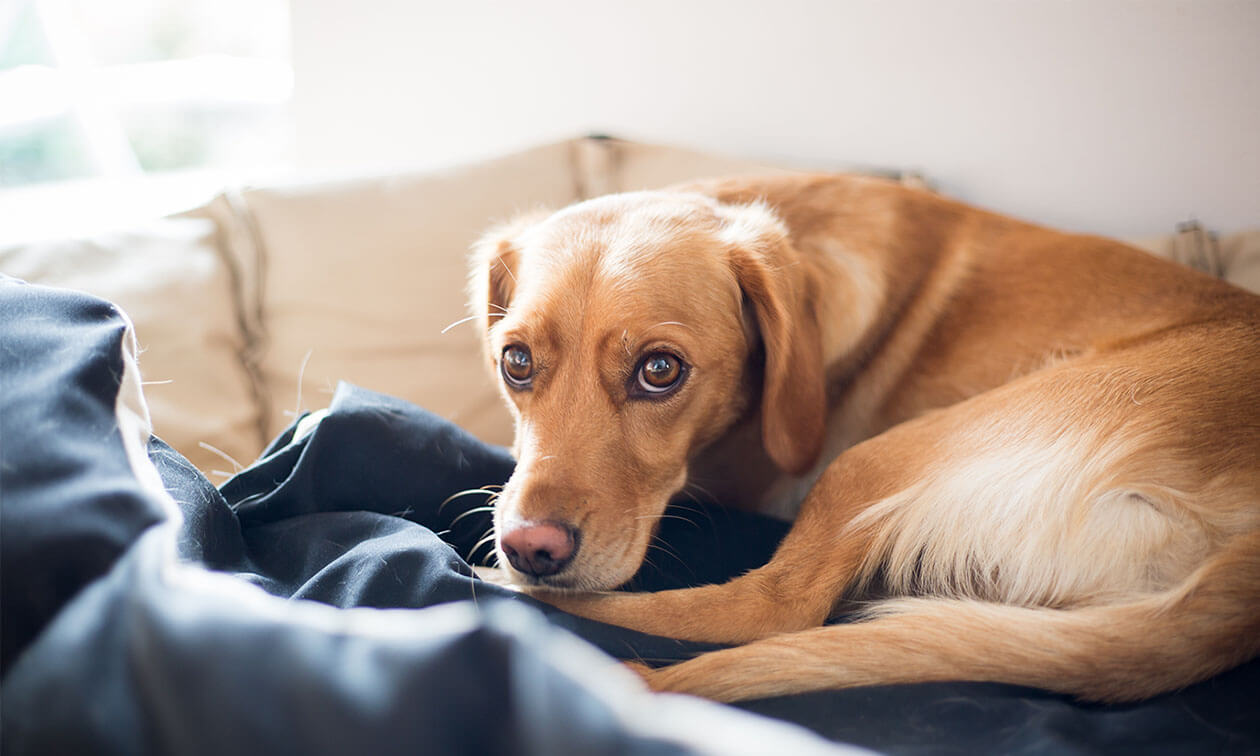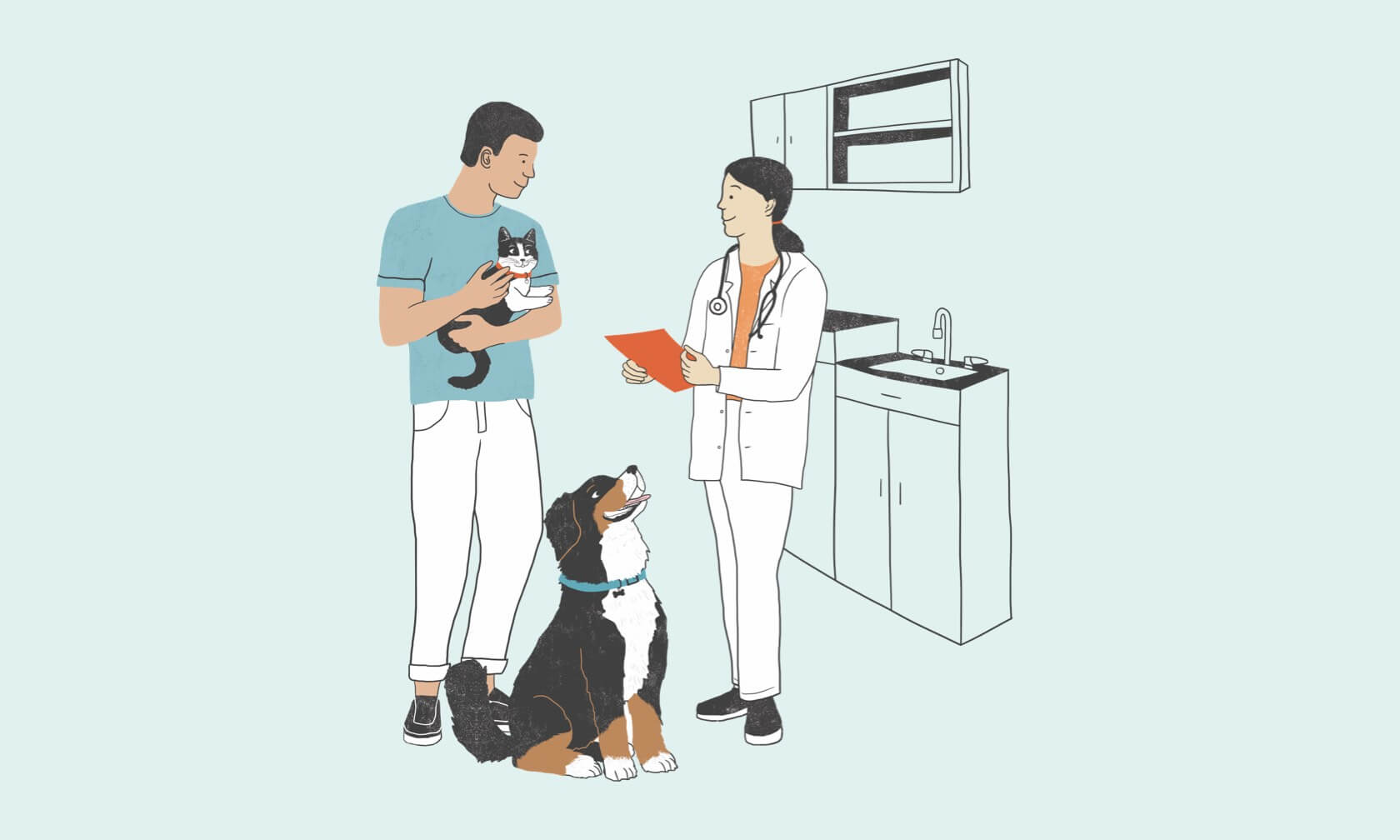Nothing is more heartbreaking than seeing your dog in pain. While having a diagnosis can bring some clarity, it can also be frightening— especially when the diagnosis is intervertebral disc disease (IVDD). However, understanding what IVDD is and what to expect can make the diagnosis far less intimidating.
What Is IVDD in Dogs?
Intervertebral disc disease, a degenerative, age-related condition of the spinal column, has been recognized in dogs since the 1800s.1
Located between the vertebrae of the spine are fibrocartilaginous cushions called intervertebral discs. These cushions act as shock absorbers for the spine. When they deteriorate, are formed abnormal or become damaged, they begin to harden until they can’t cushion the vertebra properly. This causes pressure on the spinal cord and/or the roots of the nerves exiting off the sides of the spinal cord.
This compression of the spinal cord then damages the nerve impulses going to different body parts. The most common locations of herniated disc are the neck and middle back, but it can occur in any area of the spine.
What Causes IVDD in Dogs?
Small and medium-sized dogs affected by IVDD are often between the ages of three and six years.1 But severe sudden signs have been seen in dogs as young as one to two years of age.2
Large-breed dogs typically have issues with disc degeneration after five years of age.2
IVDD in dogs is most often seen in breeds with long backs and shortened, bowed legs. Other genetic and environmental factors, like weight, mobility, and family history, also play a role.
The following breeds are prone to IVDD:
Beyond breed and genetics, intervertebral disc disease in dogs can be caused by forceful impact, such as jumping, falling, or twisting.
What Are the Symptoms of IVDD in Dogs?
Your dog’s symptoms will depend on what area of the spine is affected and the severity of the damage. Symptoms can be sudden or appear gradually.
Cervical (Neck) IVDD Symptoms
- Neck pain
- Stiffness
- Shivering
- Whining or crying
- Hesitance to move
- Abnormal or altered gait
- Lowered head position
- Muscle spasms of the head, neck, and shoulder
- Knuckling of all paws, where they rest or walk on the top of their feet instead of on the pads
- Inability to support body weight
- Inability to stand
- Lack of sensation in all four legs and paws
- No interest in eating
Thoracolumbar (Mid to Lower Back) IVDD Symptoms
- Weakness in back legs
- Abnormal gait
- Knuckling of the back paws
- Dragging the back legs
- Unable to support weight
- Unable to move back legs
- Unable to feel back legs
- Muscle spasms
- Tense abdomen
- Hunched back
- Shaking
- No interest in eating
Lumbosacral (Lower Back and Sacrum) IVDD Symptoms:
- Difficult and/or painful jumping
- Limp tail
- Urinary incontinence
- Fecal incontinence
- No anal tone, meaning the anus remains open
How To Care for a Dog with IVDD
It is critical to take your dog to your veterinarian if you see any of the signs above in your dog. Your veterinarian will talk to you about the best ways to care for your dog. If your dog’s injury is mild to moderate, they might be managed with anti-inflammatory medications, muscle relaxants and steroids. These medications are used to help with pain and swelling. If this is the case, it’s critical that your dog is confined and activity is restricted (no running, jumping, playing, or stairs) for about four to six weeks. They may even recommend rehab.
Other therapies for mild to moderate IVDD may be recommended by your veterinarian.
A more serious injury might warrant surgery or if medications were insufficient to manage pain and other symptoms. If you suspect your dog has a back injury, it is important to get them to a veterinarian as soon as possible. If your regular veterinarian is not open, you should consider taking your dog to an emergency clinic.
Post-surgery care includes restricted activity (no running, climbing stairs, playing, or jumping) and confinement for six to eight weeks, pain management medications, and close monitoring of the incision site. Physical therapy can help to strengthen your dog’s muscles and help them return to normal movement.
In cases where surgery cannot return your dog to their normal state of mobility, a dog wheelchair may help them regain their mobility and happiness.
It is important to keep in mind that even with mild cases of IVDD that they progress to being more serious. So follow your veterinarian’s instructions on handling your dog and your dog’s activity closely.
How To Prevent IVDD in Dogs
There is no way to completely prevent IVDD, but by minimizing the stress on your dog’s spine, you may be able to keep it at bay.
Some options include:
- Maintaining your dog at the proper weight for their size and body structure
- Daily exercise
- Preventing or limiting your dog jumping on and off furniture or other elevated heights
- Teaching your dog to use pet stairs or ramps
- Walking your dog with a leash and harness
If you notice that your dog has signs of IVDD, don’t wait to schedule an appointment with your vet. Quick action can help with your dog’s recovery.
ZPC-02551
Classification of Intervertebral Disc Disease. Frontiers. https://www.frontiersin.org/articles/10.3389/fvets.2020.579025/full. Accessed May 14, 2025.
- Disorders of the Spinal Column and Cord in Dogs. Merck Manual. https://www.merckvetmanual.com/dog-owners/brain,-spinal-cord,-and-nerve-disorders-of-dogs/disorders-of-the-spinal-column-and-cord-in-dogs. Accessed May 14, 2025.



